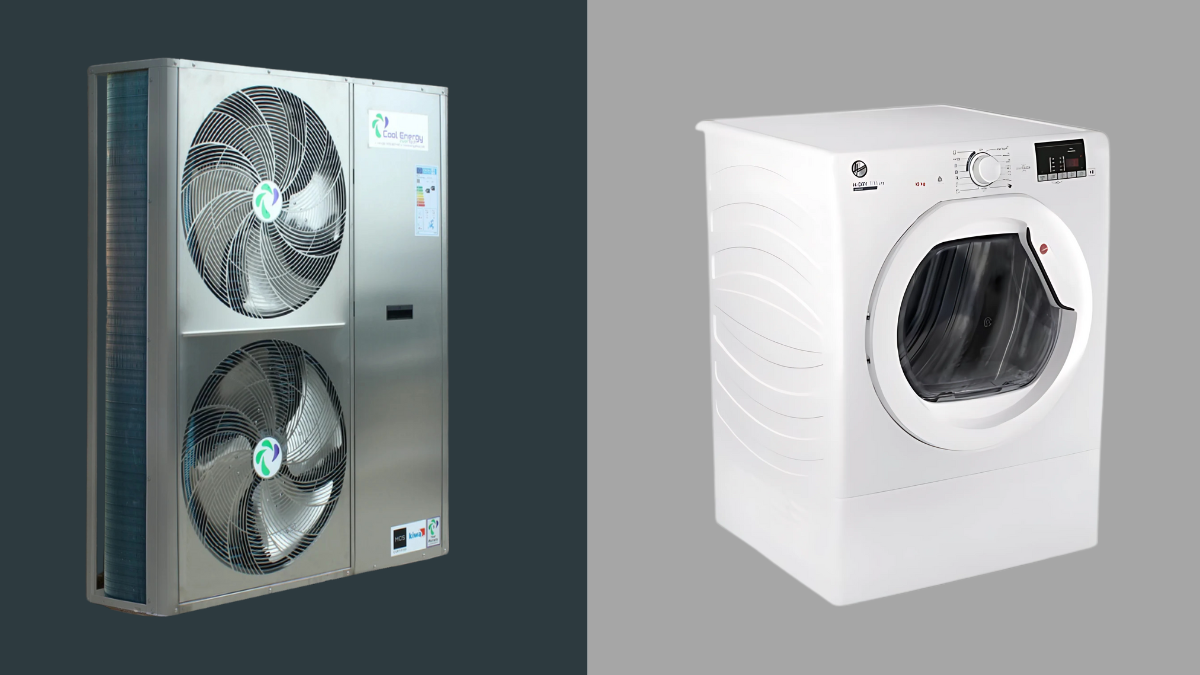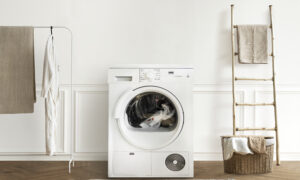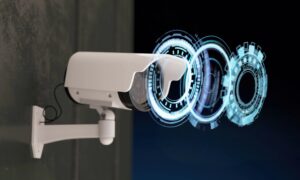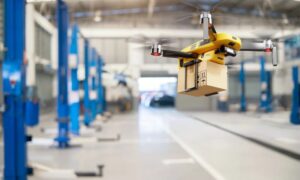Choosing the right tumble dryer for your home in 2025 means balancing convenience, drying performance, and—crucially—energy efficiency. With growing concerns over electricity costs and environmental impact, understanding the differences between heat pump and vented tumble dryers is essential.
In this article, we explore the technology behind these two popular tumble dryer types, compare their energy consumption, drying effectiveness, and running costs, and provide insights to help you make the best eco-friendly choice for your household.
How Do Heat Pump and Vented Tumble Dryers Work?
Vented Tumble Dryers
Vented dryers are the traditional model most people recognize. They work by blowing heated air through your wet laundry, absorbing moisture, and then expelling the damp air outside through a vent or hose. This constant intake of fresh air requires significant energy to heat, making vented dryers generally less energy efficient.
Heat Pump Tumble Dryers
Heat pump dryers use a closed-loop system to recycle warm air. Instead of venting moist air outside, the heat pump condenses the moisture from the air inside the dryer and reuses the heat energy to dry clothes more gently and efficiently. This process drastically reduces energy use compared to vented dryers.
Energy Efficiency: Which Dryer Saves More?
Heat pump dryers are widely regarded as the most energy-efficient tumble dryers on the market today. On average, they consume about 50% to 60% less electricity than vented models. This efficiency is primarily due to their ability to recycle heat rather than constantly generating new hot air.
In contrast, vented tumble dryers typically use more power because they heat fresh air continuously, which results in higher running costs and a larger carbon footprint.
Drying Performance and Cycle Times
While heat pump dryers save energy, one common perception is that they take longer to dry clothes. Indeed, heat pump models usually have longer drying cycles compared to vented dryers. However, advances in technology have narrowed this gap in 2025, with many heat pump dryers offering competitive drying times without sacrificing energy savings.
Vented dryers often dry clothes faster, but this speed comes at the cost of higher energy consumption. For many users, the trade-off between drying speed and energy savings leans in favour of heat pump technology, especially given the rising cost of electricity.
Installation and Space Considerations
Vented dryers require external venting, meaning they need to be placed near a window, wall vent, or external outlet. This limits placement options and can make installation more complex.
Heat pump dryers, on the other hand, do not require external venting, offering greater flexibility in where you can install them. They’re ideal for apartments, smaller homes, or spaces without external walls, making them a popular choice for modern living.
Cost Comparison: Upfront and Running Costs
Upfront Cost: Heat pump dryers generally have a higher purchase price than vented dryers due to their advanced technology and energy-saving features. However, this initial investment is often offset over time by lower energy bills.
Running Cost: Due to their superior efficiency, heat pump dryers cost significantly less to run. Over the lifespan of the appliance, this can lead to substantial savings, making them a more economical choice in the long run.
Environmental Impact
The eco-friendly credentials of heat pump dryers are strong. By using significantly less electricity, they help reduce household carbon emissions. For environmentally conscious consumers, this is a critical factor.
Vented dryers, consuming more energy and producing more waste heat, have a larger environmental footprint. As energy efficiency standards tighten globally, heat pump dryers align better with sustainable living goals in 2025.
User Experiences: What Do Consumers Say?
- US user: “My heat pump dryer has cut my energy bills noticeably. The drying time is a bit longer but the energy savings make it worthwhile.”
- UK homeowner: “I had a vented dryer for years, but switching to a heat pump model was the best upgrade. It’s quieter, gentler on clothes, and cheaper to run.”
- Family review: “We live in a flat, so the heat pump dryer’s no vent needed feature was perfect. Plus, we love energy savings.”
Maintenance and Lifespan
Heat pump dryers often require more regular maintenance to clean filters and heat exchangers, but this is straightforward and helps maintain efficiency.
Vented dryers are simpler in design and generally easier to maintain but may wear out faster due to higher heat exposure and airflow demands.
Both dryer types typically last 8-12 years with proper care.
Final Thoughts: The Clear Energy Winner for 2025 Is the Heat Pump Dryer
When it comes to saving energy, heat pump tumble dryers are the top choice in 2025. They recycle and reuse heat during drying, which cuts electricity use dramatically. This means lower energy bills and a smaller environmental impact. For anyone looking to save money and reduce their carbon footprint, heat pump dryers are an excellent option.
While heat pump dryers usually cost more upfront than vented models, the long-term savings make them worth it. They tend to take longer to dry clothes, but the energy saved during this time is significant. Plus, heat pump dryers offer flexible installation since they don’t need an external vent. This makes them easier to place in more parts of your home.
Vented tumble dryers might still appeal if you want faster drying times or a lower initial price. They dry clothes quickly and are simple to use. However, this convenience comes with higher ongoing energy bills and a bigger environmental footprint due to their lower efficiency.
Overall, heat pump dryers provide the best balance of performance, cost, and sustainability. As energy prices rise and people become more eco-aware, choosing a heat pump dryer is a smart move. It reduces your bills and helps protect the planet.
In conclusion, if you want a future-proof appliance that saves energy and offers versatile installation, the heat pump dryer is the way to go. While vented dryers may fit certain needs or budgets, heat pumps deliver better value over time. Switching to heat pump technology is a smart investment for your home and the environment.





















